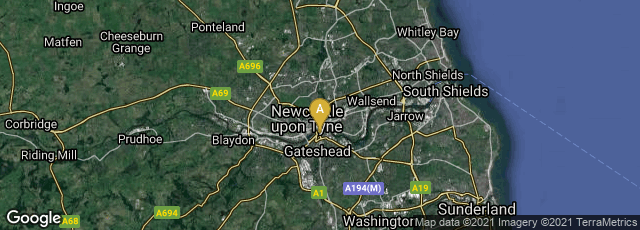

A: Gateshead, England, United Kingdom
In 1790 at Newcastle upon Tyne British engraver and natural history author Thomas Bewick published A General History of Quadrupeds. The Figures Engraved on Wood by T. Bewick. In this work he first advanced wood engraving technique to the point at which it became one of the most widely used methods of reproducing engravings during the nineteenth century, especially as woodblocks engraved using Bewick's techniques could withstand many thousands of impressions from machine presses with almost no deterioration.
"His [Bewick's] work differed from earlier woodcuts in two key ways. First, rather than using woodcarving tools such as knives, Bewick used an engraver's burin (graver). With this, he could create thin delicate lines, often creating large dark areas in the composition. Second, wood engraving traditionally uses the wood's end grain—while the older technique used the softer side grain. The resulting increased hardness and durability facilitated more detailed images.
"Wood-engraved blocks could be used on conventional printing presses, which were going through rapid mechanical improvements during the first quarter of the 19th century. The blocks were made the same height as, and composited alongside, movable type in page layouts—so printers could produce thousands of copies of illustrated pages with almost no deterioration. The combination of this new wood engraving method and mechanized printing drove a rapid expansion of illustrations in the 19th century. Further, advances in stereotype let wood-engravings be reproduced onto metal, where they could be mass-produced for sale to printers" (Wikipedia article on Wood engraving, accessed 10-07-2018).